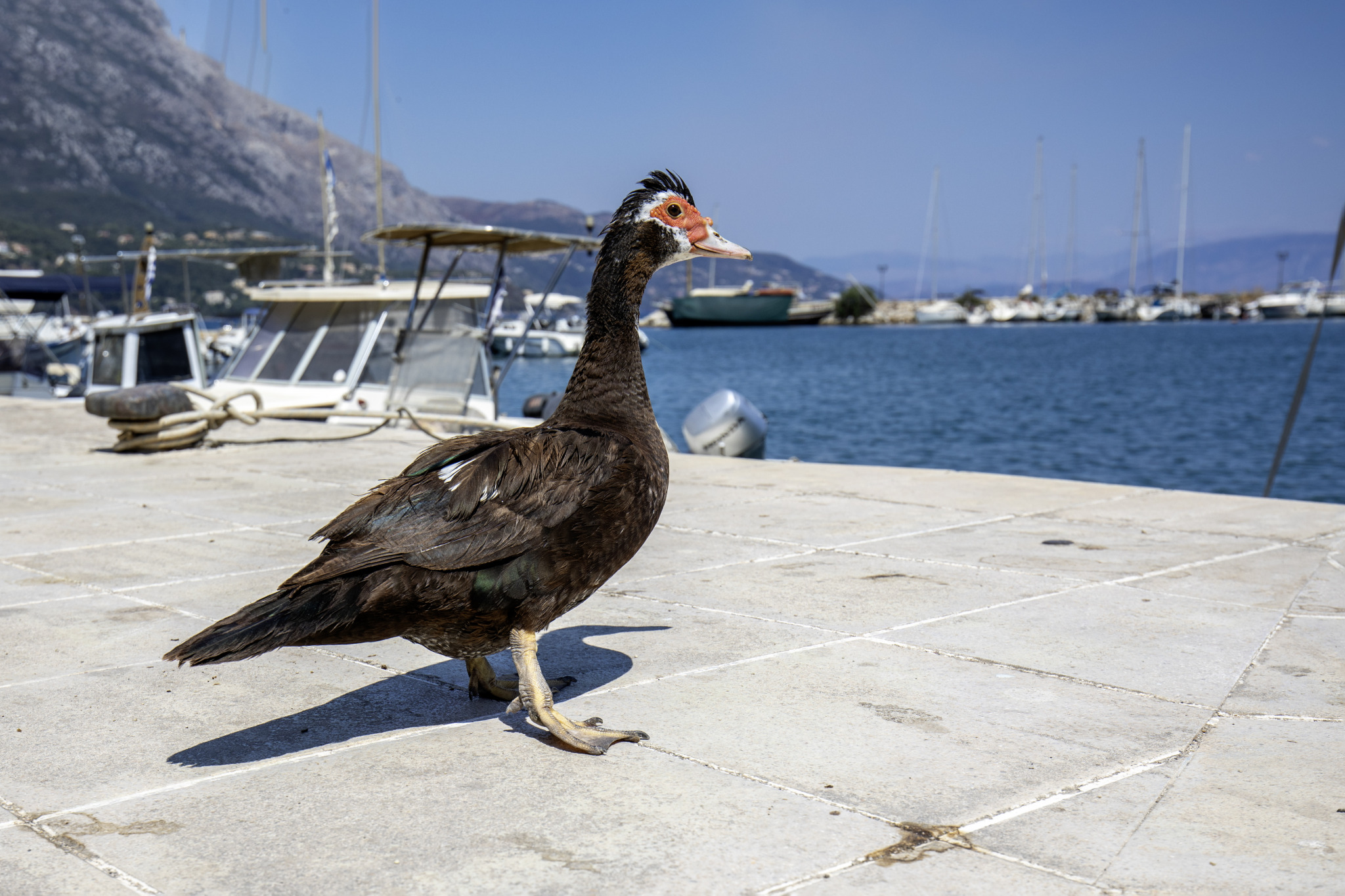The Muscovy Duck (Cairina moschata) is a large, distinctive waterfowl native to Central and South America, with domesticated varieties found worldwide. Unlike many other ducks, the Muscovy Duck is more closely related to geese than to other ducks, which is evident in its unique appearance and behavior.
Description
- Size:
- Muscovy Ducks are large, with males typically weighing between 4.5 to 6.8 kg (10 to 15 lbs) and females being slightly smaller at 2.7 to 3.6 kg (6 to 8 lbs). They can reach up to 76 cm (30 inches) in length.
- Appearance:
- Coloration: Wild Muscovy Ducks have predominantly black plumage with iridescent green and purple gloss, while domesticated varieties can be white, black, or a mix of colors.
- Face: One of the most striking features of the Muscovy Duck is its red, bumpy facial skin, known as a caruncle, which is more pronounced in males.
- Bill: Their bill is relatively short and wide, often with dark markings.
- Wings: They have broad wings that contribute to their strong flight capabilities, particularly in wild populations.
Habitat and Range
- Native Range:
- The Muscovy Duck is native to forests, swamps, and wetlands of Central and South America, ranging from Mexico down to Argentina.
- Domesticated Range:
- Domesticated Muscovy Ducks have been introduced worldwide and can be found on farms, in parks, and near water bodies across North America, Europe, Asia, and Australia.
- Habitat:
- In the wild, they prefer wooded areas near water, such as lakes, rivers, and marshes. They are highly adaptable and can also thrive in urban environments.
Behavior
- Feeding:
- Muscovy Ducks are omnivorous, feeding on a wide variety of foods including aquatic plants, small fish, insects, and even small reptiles. They are also known to forage for food on land, eating grains, seeds, and fruits.
- Breeding:
- Muscovy Ducks are tree nesters, often choosing hollows in trees near water for nesting. They lay between 8 to 16 eggs per clutch, which are incubated for about 35 days. The female is solely responsible for incubation and caring for the ducklings.
- Vocalization:
- Unlike other ducks, Muscovy Ducks are relatively quiet. They do not quack but instead communicate through a variety of hisses, grunts, and whimpers, especially during courtship or when threatened.
Domestication and Uses
- Domesticated Varieties:
- The domesticated Muscovy Duck is popular for its meat, which is leaner and less fatty compared to other ducks. It is also valued for its ability to control insect populations, such as mosquitoes, on farms.
- Behavioral Differences:
- Domesticated Muscovy Ducks are generally more docile and have a variety of plumage colors compared to their wild counterparts.
- Environmental Impact:
- In some regions, introduced populations of Muscovy Ducks have become invasive, outcompeting native species and disrupting local ecosystems.
Conservation
- Status:
- The wild Muscovy Duck is not considered endangered and has a stable population in its native range. However, conservation efforts focus on protecting their natural habitats from deforestation and degradation.
- Domesticated Impact:
- The widespread domestication of Muscovy Ducks has led to concerns about the genetic purity of wild populations, as hybridization with domestic ducks can occur.
Summary
The Muscovy Duck (Cairina moschata) is a unique and adaptable waterfowl, known for its large size, distinctive red facial caruncles, and quiet demeanor. Native to Central and South America, it has been domesticated worldwide for its meat and ability to control pests. While not endangered in the wild, its adaptability has led to concerns about invasive populations in some regions.
Visited 808 times, 25 visit(s) today
Views: 1251
Subscribe to the newsletter:
